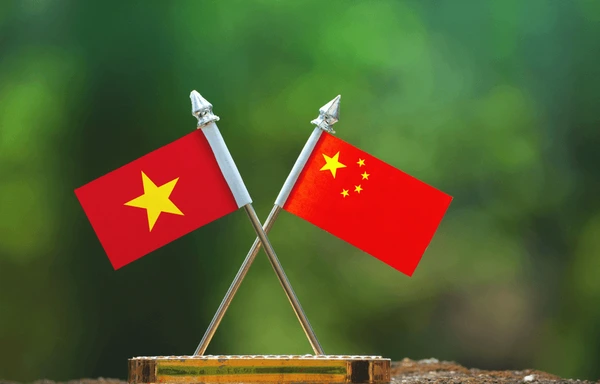Font size:
Print
China-Vietnam Red diplomacy
Context : China-Vietnam
Vietnamese President To Lam’s recent visit to China sought to rekindle the historical ties between the two nations, evoking the camaraderie of Mao Zedong and Ho Chi Minh to strengthen political trust.

Red Diplomacy
It is a term that generally refers to the strategic use of “red lines” in international relations, particularly in diplomatic contexts. These red lines signify boundaries or thresholds that, if crossed, could lead to severe consequences or responses from a state.
Key Features of Red Diplomacy
- Definition of Red Lines: A red line is a point or limit that must not be exceeded or violated.
- Purpose: The main purpose of establishing red lines is deterrence.
Examples in Practice
- U.S. and Syria: The United States has historically used red lines in its foreign policy, notably during the Syrian civil war when President Obama stated that the use of chemical weapons by the Assad regime would constitute a “red line” that could trigger U.S. intervention.
- Israel and Iran: Israel has articulated red lines concerning Iran’s nuclear program, indicating that certain levels of uranium enrichment would provoke military action to prevent nuclear proliferation.
More on News:
- For Beijing, which faces increasing pressure from Western alliances, this “communist breeze” from the South China Sea was a welcome relief.
- The visit occurred amid efforts by the U.S. and the Philippines to align with Vietnam to challenge China in the South China Sea.
- President Lam, after becoming General Secretary of the Communist Party of Vietnam (CPV), chose China for his first foreign visit, beginning in Guangzhou, the birthplace of the CPV.
Shared Future:
- Vietnam and China issued a joint statement reaffirming their commitment to strengthening their “comprehensive strategic cooperative partnership” and envisioning a “Vietnam-China community with a shared future,” in response to increasing external pressures.
- The statement highlighted Xi Jinping’s prioritisation of Vietnam in China’s neighbourhood diplomacy and expressed support for Vietnam’s Communist Party leadership.
- The joint statement stressed the importance of theoretical exchanges, experience sharing, and cooperation between the CPV and CPC to further the socialist cause, with Chinese experiences serving as a model for the CPV.
- Despite their cooperation, historical tensions—such as the brief camaraderie that faded after the China-Vietnam war in 1979—indicate that their shared socialist systems do not always translate into aligned worldviews or strategic interests.
Expanding Partnerships:
- During the visit, Vietnam and China signed 14 agreements to strengthen their strategic partnership in areas like connectivity, infrastructure, and healthcare.
- In 2023, bilateral trade reached $171.9 billion, with China as Vietnam’s largest import market and second-largest export market.
India and Vietnam:
- Despite ongoing territorial disputes over the Paracel Islands, trade imbalances, and security concerns, Vietnam has adopted a strategy known as “Bamboo Diplomacy,” introduced by late CPV General Secretary Nguyen Phu Trong.
- This approach sees Vietnam cautiously navigating regional and international security dynamics by “hedging” with countries like the U.S., India, Russia, and Japan to protect and maximise its strategic interests.
- For Vietnam, India serves as a centre for religious pilgrimage due to their Buddhist civilizational ties, while China represents an ideological pilgrimage, revitalising their shared revolutionary history and political alliances.
- New Delhi, in turn, can leverage its cultural and historical connections, including their shared colonial resistance, to strengthen its strategic partnership with Hanoi.
- The relationship between India and Vietnam remains obstacle-free, driven by shared ambitions for a prosperous and multipolar Asia.
- Under the “Act East” policy, India aims to enhance its engagement with the region.
- Deepening cultural and economic ties with Vietnam will make it a key partner for India in Southeast Asia, supporting their mutual vision for regional stability and global order.
Subscribe to our Youtube Channel for more Valuable Content – TheStudyias
Download the App to Subscribe to our Courses – Thestudyias
The Source’s Authority and Ownership of the Article is Claimed By THE STUDY IAS BY MANIKANT SINGH





